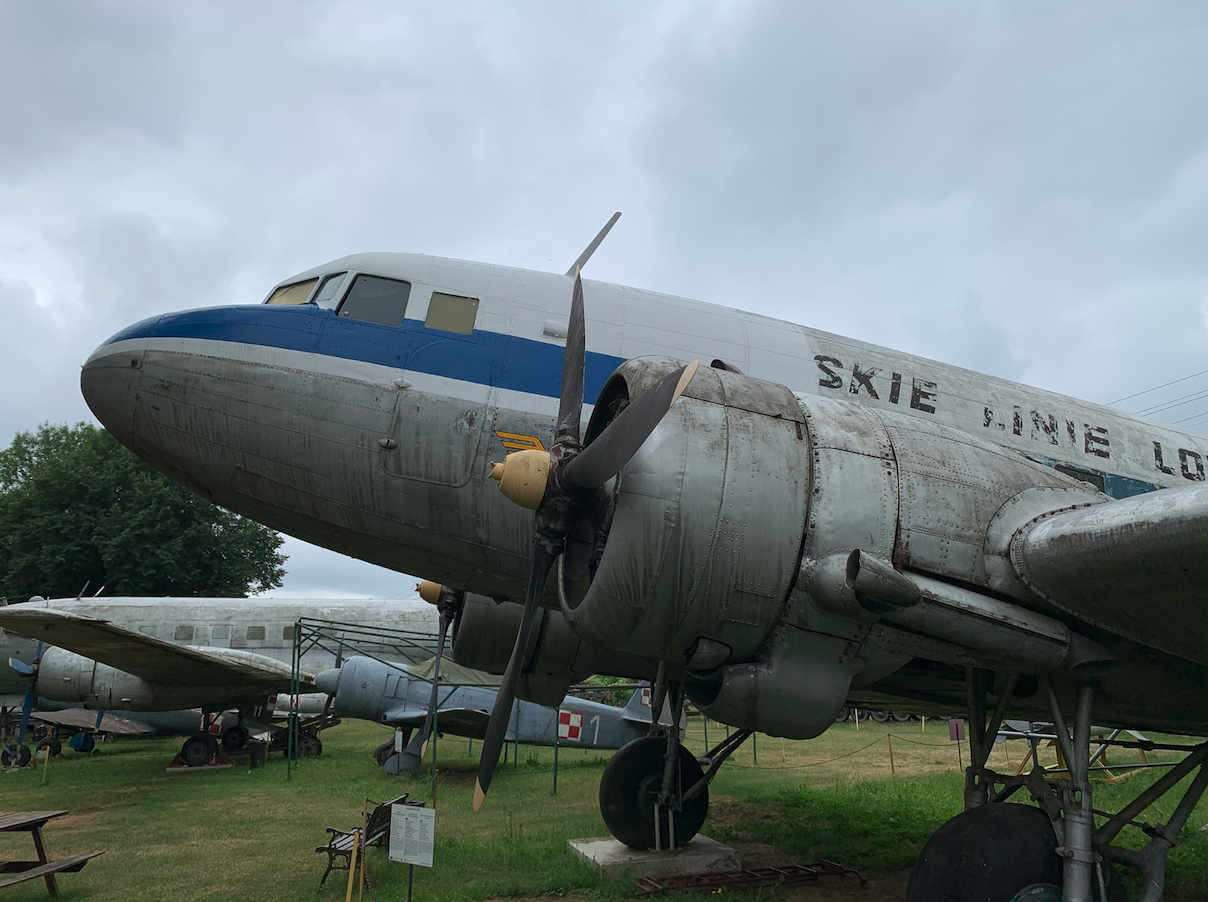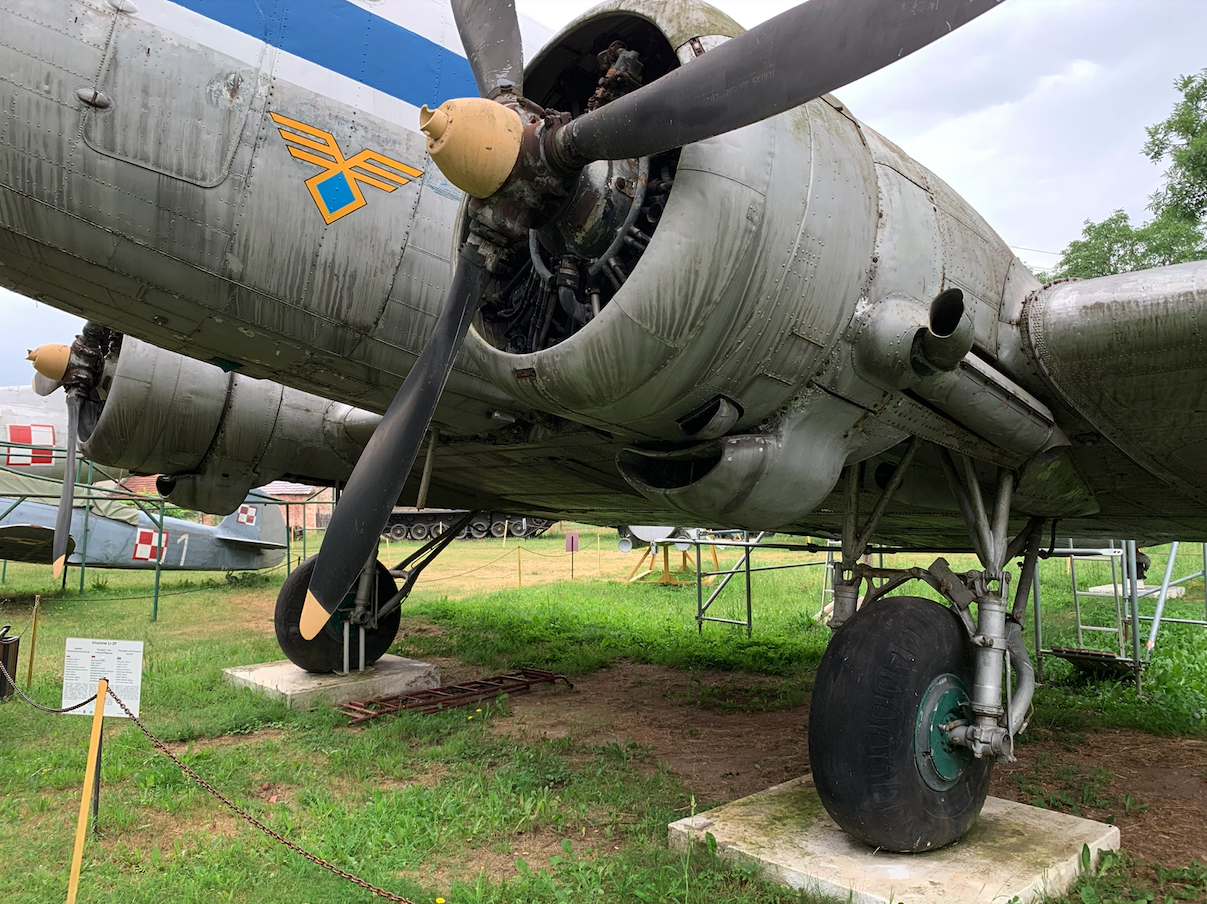Drzonów 2022-11-18
016b Section April 1945 year.
Lisunow Li-2 SP-LAS at the museum in Drzonów.
The Lisunow Li-2 aircraft is a transport aircraft, a license of the American Douglas DC-3 aircraft. Both Li-2 and DC-3 aircraft were used in Poland after World War II. The main users were the Polish Army and LOT Polish Airlines. Officially, the first Lisunow Li-2 aircraft were adopted by the Polish Army in April 1945.



Lisunov Li-2 construction history.
In 1936, a Soviet delegation went to the USA to purchase a license for a passenger plane, which was to be the basic plane for Aeroflot airlines. At that time, Aeroflot used worn-out passenger machines that were modifications of bomber aircraft. The Soviet choice fell on the Douglas DC-2 aircraft, which made its first flight in 1934. But already in December 1935, an enlarged version of this aircraft, marked DC-3, was flown in the USA. Negotiations were conducted at Douglas's main production plant in Santa Monica. The talks were finalized in 1937, signing an agreement to purchase production rights and 20 DC-3 serial machines, plus two copies completely in parts. The machines were delivered to CCCP by sea, partially dismantled. They served as models for serial production, scaling Anglo-Saxon measurements into metric ones, adapting technologies to those known in CCCP and for training purposes for pilots and mechanics.
The DC-3 (C-47) aircraft was powered by 14-cylinder piston engines in a double star system, air-cooled Pratt-Whitney Twin Wasp R-1830-92, with a take-off power of 2 x 883 kW (2 x 1,200 hp). The power of these engines ensured a virtually uninterrupted take-off when one of the engines failed. On the other hand, the Li-2 received weaker engines, which significantly worsened safety. Licensed Wright Cyclone R-1820 engines were used, air-cooled, 9-cylinder, single-star, 2 x 736 kW (2 x 1,000 hp), marked in the CCCP initially M-1820, and later M-62 / ASz -621 R. Li-2 propellers were metal, 3-bladed, type AW-7N-161, 3.5 m in diameter. The DC-3 aircraft used Hamilton-Standard propellers, also 3.5 m in diameter.
The name Li-2 was given only in 1942, and was associated with the name of engineer Borys Pawłowicz Lisunow. Lisunov was the main designer and led the work on adapting the Douglas DC-3 aircraft to the capabilities of the Soviet industry. Unfortunately, in 1946, Lisunov died and the Li-2 aircraft was his only construction.
The first Soviet PS-84 (DC-3) were built in 1939, and by June 1941, only 72 machines had been built. They went to Aeroflot and were used for war purposes. Production of Li-2 / PS-84 for the needs of the army lasted until 1946 and closed with the number of about 3,000 units. After the war, further production was carried out mainly for civilian needs and for export until 1952 and amounted to a total of 4,863 units. The basic PS-84/Li-2 version carried 3 crew members and 26 passengers.
Li-2 for Poland. 1945.
Polish pilots encountered Douglas DC-3 (C-47) aircraft during World War II in the Polish Armed Forces in Great Britain.
After World War II, 17 Li-2 T machines were used in the Polish Military Aviation. The first copies were delivered to the Polish People's Army in April 1945. By the end of 1945, there were already 6 machines in stock. In 1960, 17 pieces, in 1970, 12 pieces. For the last three years, 3 more machines were operated, which were written off in 1974, finally ending their operation after 19 years.
In the 1960s, Li-2 aircraft were operated mainly in the 13th Transport Aviation Regiment in the 1st Squadron, serving, among others, parachute jumpers. In addition to typically military tasks, charter flights, humanitarian flights, and flights for the National Bank of Poland were also performed. In the Polish Army, the plane was called "Litka".
Li-2 and DC-3 at LOT Polish Airlines.
In 1946, the PLL LOT aviation company was reactivated, which took over 10 Li-2 machines from the army. These planes were used to launch the first domestic Warsaw-Gdańsk line after the war.
Also in 1946, 9 DC-3 machines were purchased, which began to be operated on foreign lines. They received registrations SP-LKA, SP-LKB, SP-LKC, SP-LKD, SP-LKE, SP-LKF, SP-LKG, SP-LKH, SP-LKI. These were surplus planes, in the C-47 A version. There were only metal benches in the passenger cabin. The cabin was modernized and 21 seats were installed, in a 2+1 arrangement in 7 rows. In 1957, another modification of the interior was made by installing 24 seats. The last DC-3 in LOT ended its service in 1959 and was sold to Iran.
It must be admitted that the precise determination of the number of operated aircraft in Poland; in the army and LOT Polish Airlines is very difficult. Some of the planes operated by LOT Polish Airlines wore civilian colors, but they were in army condition. According to the available information, in 1946, there were 20 Li-2 machines in 1946, 29 in 1947, 39 in 1953, 40 in 1955. Li-2 aircraft were operated at LOT Polish Airlines until 1967. According to other data, until 1969. Certainly, the Li-2 aircraft was the most frequently operated aircraft in LOT Polish Airlines.
Lisunov Li-2 SP-LAS.
The Lisunow Li-2 SP-LAS aircraft was accepted by LOT Polish Airlines in April 1946 as the 17th example of this type. He received his own name "STASIEK". It was operated at PLL LOT until November 1961. The aircraft carries the serial number 18423203, but also No. 18423202. The aircraft in the passenger cabin has 24 seats in a 2+1 arrangement, in 8 rows.
After some time, the plane was transferred to the museum in Drzonów, where it is an exhibit to the present (2022). The plane was a gift from PLL LOT for the museum.
Written by Karol Placha Hetman
